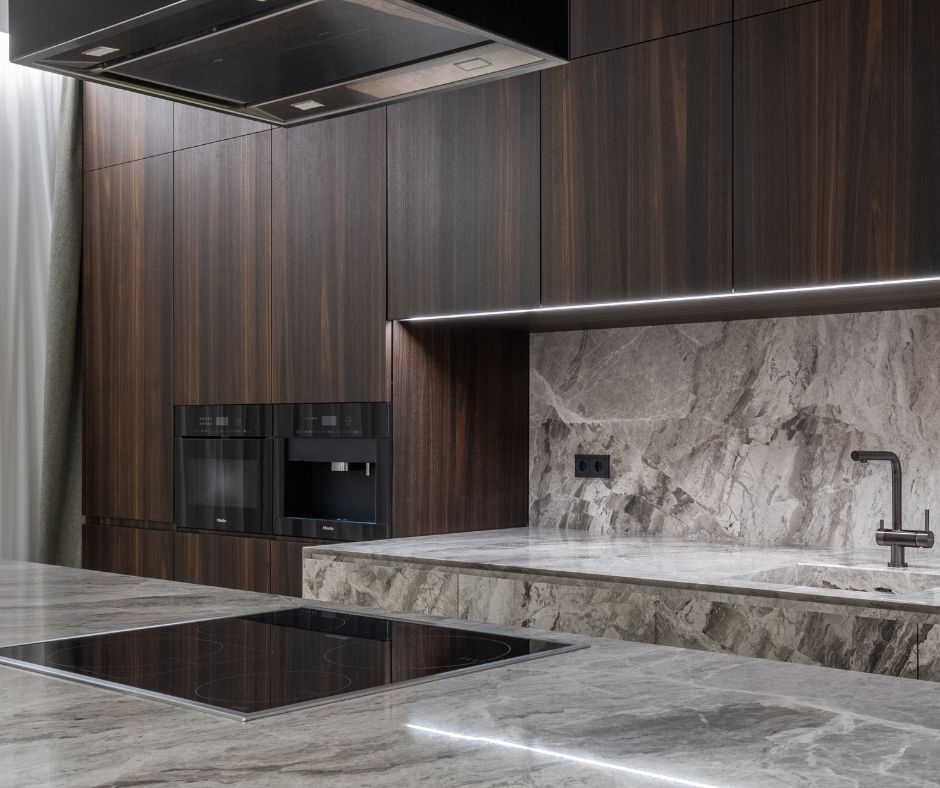Revolutionary kitchens are reshaping culinary traditions by embracing cutting-edge techniques. While induction cooking technology might appear to be a contemporary innovation, its roots can be traced back to the early 20th century. The initial demonstrations in the 1930s mesmerised audiences, showcasing the astonishing ability to boil water using magnetic energy without any observable heat source. However, it is only in recent decades, driven by breakthroughs in technology, enhanced efficiency, and refined design, that induction cooktops have firmly established themselves as essential components in modern kitchens.
In today’s culinary landscape, a growing number of home chefs and passionate food enthusiasts are gravitating towards induction cooking for its impressive fusion of sleek aesthetics, exceptional precision, and unrivalled energy efficiency. This innovative cooking method not only accelerates meal preparation but also transforms the art of home cooking, blending the science of heat management with culinary creativity in every dish crafted on its elegant, polished surface. The ideal induction cooktop can rival the speed of a microwave in delivering delectable family meals!
Harnessing the Power of Precision Cooking to Enhance Flavor and Nutrition
Unlike traditional gas or electric ranges, induction cooktops directly heat cookware through electromagnetic energy. This groundbreaking method eliminates wasted heat, prevents unsightly burnt edges, and offers superior control over both low and high temperatures. With such precise heat management, your ingredients retain more of their natural moisture, flavour, and nutritional integrity. Whether you’re rapidly searing proteins, gently simmering sauces, or quickly blanching vegetables, induction cooking ensures that achieving perfect results is effortless, steering clear of overcooked meals and nutrient loss.
Elevating Kitchen Style: The Aesthetic and Practical Advantages of Induction Cooktops
In kitchens where every square inch is precious, induction cooktops excel not only in performance but also in their visual appeal. Their flat, smooth surfaces seamlessly integrate into your countertop, creating a minimalist look that maximises space for food preparation, plating, or even enjoying informal meals.
In contrast to conventional gas hobs, which are often accompanied by bulky grates and protruding burners, induction cooktops sit flush with the countertop. While ceramic stovetops may provide a more streamlined appearance, they typically remain dangerously hot long after cooking has finished.
Conversely, induction surfaces cool down rapidly once the cookware is removed. The heat is generated through the magnetic interaction between the cooktop and the cookware rather than from the cooktop itself, resulting in the glass surface retaining significantly less heat. This feature not only makes cleaning safer and simpler but also creates a more secure cooking environment, particularly advantageous for households with children or pets who may be curious about the kitchen counters.
The result? A cooler kitchen with cleaner lines and increased flexibility—ideal for modern cooks who appreciate both aesthetic beauty and practical functionality.

Comprehensive Guide to Choosing the Perfect Cookware for Induction Cooking
Transitioning to induction cooking may come with the bittersweet realisation that you might need to part ways with some beloved old pans. Since induction technology relies on magnetic energy for heat generation, not all pots and pans will be suitable for this innovative method.
For cookware to function effectively on an induction cooktop, it must be crafted from ferrous (magnetic) metals, including cast iron, carbon steel, or magnetic-grade stainless steel. A straightforward fridge magnet test can determine compatibility: simply place a magnet on the bottom of the pan. If it adheres firmly, you’re all set.
When selecting new cookware, opt for pans with a heavy, flat base. This design guarantees optimal contact with the cooktop, providing even heat distribution, which is critical for achieving perfect browning, tender roasts, and crispy edges. Furthermore, high-quality induction cookware is specifically engineered to resist warping over time, ensuring consistent cooking performance for each culinary creation.
Though it may be challenging to let go of old favourites, view it as an upgrade. In exchange, you gain enhanced control, quicker cooking times, and dishes that showcase even richer flavours and textures.
Induction Cookware Essential Checklist: Key Items for Culinary Success
 Conduct a fridge magnet test—strong adhesion indicates compatibility for induction cooking
Conduct a fridge magnet test—strong adhesion indicates compatibility for induction cooking Choose flat-bottomed pans to ensure optimal contact and even heat distribution
Choose flat-bottomed pans to ensure optimal contact and even heat distribution Select cast iron, carbon steel, or magnetic stainless steel cookware for best results
Select cast iron, carbon steel, or magnetic stainless steel cookware for best results Avoid cookware made solely from copper, aluminium, or glass unless specifically marked for induction
Avoid cookware made solely from copper, aluminium, or glass unless specifically marked for induction Look for the induction symbol (which resembles a horizontal coil or a series of loops) stamped on the base or packaging
Look for the induction symbol (which resembles a horizontal coil or a series of loops) stamped on the base or packaging
Pro Tip: The induction symbol typically resembles a zigzag or spiral coil graphic. Spotting it ensures cookware compatibility for induction cooking.
Essential Installation Considerations for Your Induction Cooktop
Before embarking on your culinary adventure with your new cooktop, it is vital to prioritise several installation essentials:
-
Professional Installation Is a Necessity: Induction units often require dedicated electrical circuits and specific clearance requirements. Make sure to engage professionals who are knowledgeable about these requirements.
-
Hire a Certified Electrician: Wiring a high-powered induction cooktop is not a DIY job.
Learn why it is crucial to hire a qualified electrician for installation. -
Confirm Your Power Configuration: Some induction models require substantial power. Prior to purchasing, verify that your wiring meets the cooktop’s specifications.
Proper installation not only ensures optimal performance but also guarantees safety and durability.
Important Insights Regarding Induction Cooking
Induction cooking offers much more than mere speed or safety—it’s fundamentally intelligent. With the right cookware and a professionally installed system, you can enjoy better-tasting meals, richer textures, and healthier options, meal after meal. In contemporary kitchens, precision cooking is not just a preference; it has evolved into the new standard.
Frequently Asked Questions About Induction Cooktops
1. What Makes Induction Cooktops More Effective than Gas or Electric Alternatives?
Induction cooktops offer instant heat control, improved energy efficiency, and enhanced safety features. Since they heat the cookware directly, meals cook more swiftly with reduced energy waste, while the surfaces remain cooler, significantly lowering the risk of burns.
2. Can I Use My Existing Pots and Pans on an Induction Cooktop?
Only if they are magnetic. Cookware made from cast iron or magnetic stainless steel is optimal. You can easily check compatibility by placing a magnet on the base—if it sticks firmly, it’s suitable for induction cooking.
3. Does Induction Cooking Affect the Flavour of Food?
Yes, and positively so. Because induction cooking allows for precise temperature control, you can sear, sauté, or simmer without overheating, thereby preserving the natural flavours, textures, and nutrients much more effectively than with inconsistent gas or electric heat.
4. Is Special Wiring Necessary for an Induction Cooktop?
Most induction cooktops require a dedicated electrical circuit with specific voltage and amperage configurations. It is imperative to have a professional electrician assess and install your wiring to ensure compliance with safety regulations and to guarantee optimal performance.
The post The Secret Ingredient in Modern Kitchens: Induction Cooktops Are Changing the Game appeared first on https://cookinggods.com
The Article Induction Cooktops: The Game-Changer in Modern Kitchens Was Found On https://limitsofstrategy.com

